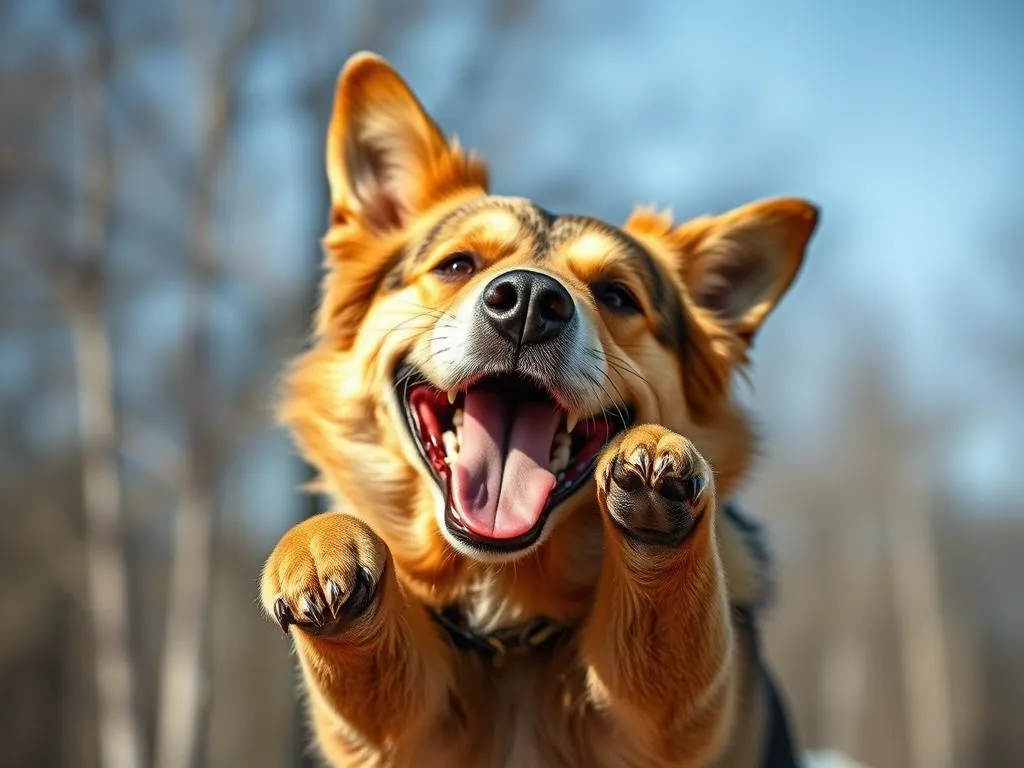
Dogs are known for their playful spirits, and one of the most captivating displays of their energy is jumping. Whether it’s leaping over a fence, bounding into the air to catch a frisbee, or simply jumping up to greet their favorite human, dogs can showcase remarkable agility. But how high can a dog jump? Understanding your dog’s jumping ability is essential not only for training but also for ensuring their safety during play. In this article, we will explore the factors that affect a dog’s jump height, average jump heights by breed, training tips to enhance their jumping skills, and some fun facts about dog jumping records.
Understanding Dog Jumping Ability
What Determines How High a Dog Can Jump?
Several factors contribute to a dog’s jumping ability. Understanding these can help you gauge your dog’s potential and set realistic training goals.
Physical Factors
-
Age and Health of the Dog: Just like humans, a dog’s ability to jump can decline with age. Older dogs may not be able to jump as high due to arthritis or other physical limitations. Regular veterinary check-ups can help monitor a dog’s health and any conditions that might impact their jumping ability.
-
Size and Weight: Generally, smaller dogs tend to jump lower than larger breeds. A Chihuahua, for instance, will not reach the same heights as a German Shepherd. However, lighter dogs often exhibit more agility, allowing them to jump impressively for their size.
-
Muscle Strength and Conditioning: A dog’s muscle tone plays a crucial role in their ability to jump. Dogs that receive regular exercise and conditioning can jump higher than those that lead a sedentary lifestyle.
Breed Characteristics
Certain breeds are naturally inclined to jump higher due to their physical build and energy levels.
-
Breeds Known for Jumping: Breeds such as Greyhounds, Border Collies, and Australian Shepherds are renowned for their jumping abilities. These dogs possess strong muscles and a lean physique that enables them to take off and reach great heights.
-
Breeds with Less Jumping Ability: On the other hand, breeds like Bulldogs and Dachshunds may struggle with jumping due to their weight distribution and body structure. These dogs are not built for high leaps and can be prone to injuries if pushed beyond their limits.
Average Jump Heights by Breed
Jump heights can vary significantly among breeds. Here’s a closer look at the average jump heights for small, medium, and large breeds:
- Small Breeds:
- Chihuahua: 1-2 feet
- Pug: 1-2 feet
-
Yorkshire Terrier: 1-2 feet
-
Medium Breeds:
- Beagle: 2-3 feet
- Cocker Spaniel: 2-3 feet
-
Bulldog: 1-2 feet
-
Large Breeds:
- Labrador Retriever: 3-4 feet
- German Shepherd: 4-5 feet
- Golden Retriever: 3-4 feet
Comparative Chart
| Breed | Average Jump Height |
|---|---|
| Chihuahua | 1-2 feet |
| Pug | 1-2 feet |
| Beagle | 2-3 feet |
| Cocker Spaniel | 2-3 feet |
| Labrador Retriever | 3-4 feet |
| German Shepherd | 4-5 feet |
Training Your Dog to Jump Higher
If you’re looking to enhance your dog’s jumping ability, proper training is key. Training not only improves your dog’s skills but also strengthens your bond with them.
Assessing Your Dog’s Current Jumping Ability
Before beginning any training regimen, it’s important to assess your dog’s current jumping capabilities.
-
Initial Assessment: Measure how high your dog can currently jump. You can do this by setting up a safe environment and using a tape measure to gauge the height they can reach.
-
Setting Realistic Goals: Based on your dog’s breed, age, and health, establish achievable goals. For instance, if you have a Labrador Retriever, aiming for 4 feet might be realistic, while for a Bulldog, a goal of 2 feet could be more suitable.
Training Techniques
Effective training techniques can help your dog jump higher and with more confidence.
-
Basic Jumping Commands: Start by teaching basic commands such as “Jump” or “Over.” Use treats to encourage your dog to leap over small obstacles. Gradually increase the height as they become more comfortable.
-
Equipment for Training: Utilize jump bars, hoops, and hurdles to create a fun jumping course. Make sure the equipment is safe and suited to your dog’s size and skill level.
-
Progressive Training Schedule: Develop a step-by-step training plan that gradually increases the height of the jumps. Start with low obstacles and progressively raise them as your dog improves.
-
Positive Reinforcement: Always use positive reinforcement techniques such as treats and praise to encourage your dog during training. This will build their confidence and make the training process enjoyable.
Safety Considerations
While training, it’s crucial to prioritize your dog’s safety.
-
Preventing Injuries: Ensure your training area is free of hazards. Warm-up exercises can help prevent injuries, just like in human athletes.
-
Recognizing Signs of Strain: Be attentive to your dog’s behavior. Signs of strain include limping, excessive panting, or reluctance to jump. If you notice any of these symptoms, it’s essential to stop training and consult a veterinarian.
Fun Facts and Records
Dog jumping is not just a fun activity but also a competitive sport, with records that highlight some amazing feats.
Notable Jumping Records
-
World Records: The Guinness World Record for the highest jump by a dog is held by a Greyhound named “Feather,” who jumped an impressive 75.5 inches in 2017. This showcases how certain breeds can push the limits of their jumping capabilities.
-
Famous Jumping Dogs: Dogs like “Coco,” a Border Collie, gained fame for her spectacular jumping ability, often seen leaping into the air while catching frisbees during competitions.
Dog Jumping Competitions
Dog jumping competitions are a popular activity among dog owners and trainers.
-
Overview of Competitions: Events such as the AKC Agility Trials and Dock Diving competitions challenge dogs to showcase their jumping skills. These competitions often feature various obstacles and require both agility and speed.
-
Training for Competitions: Preparing your dog for competitive jumping involves specific training strategies. Focus on developing their agility and speed, and invest time in familiarizing them with the competition environment.
Conclusion
Understanding how high a dog can jump is not only fascinating but also essential for dog owners who wish to engage their pets in jumping activities. From assessing physical factors like age and breed characteristics to implementing effective training techniques, owners can help their dogs reach new heights. Remember to prioritize safety during training and recognize your dog’s limits to prevent injuries.
Engaging in jumping activities can provide dogs with mental stimulation and physical exercise, contributing to their overall well-being. So grab your leash, set up some obstacles, and enjoy jumping with your furry friend!









